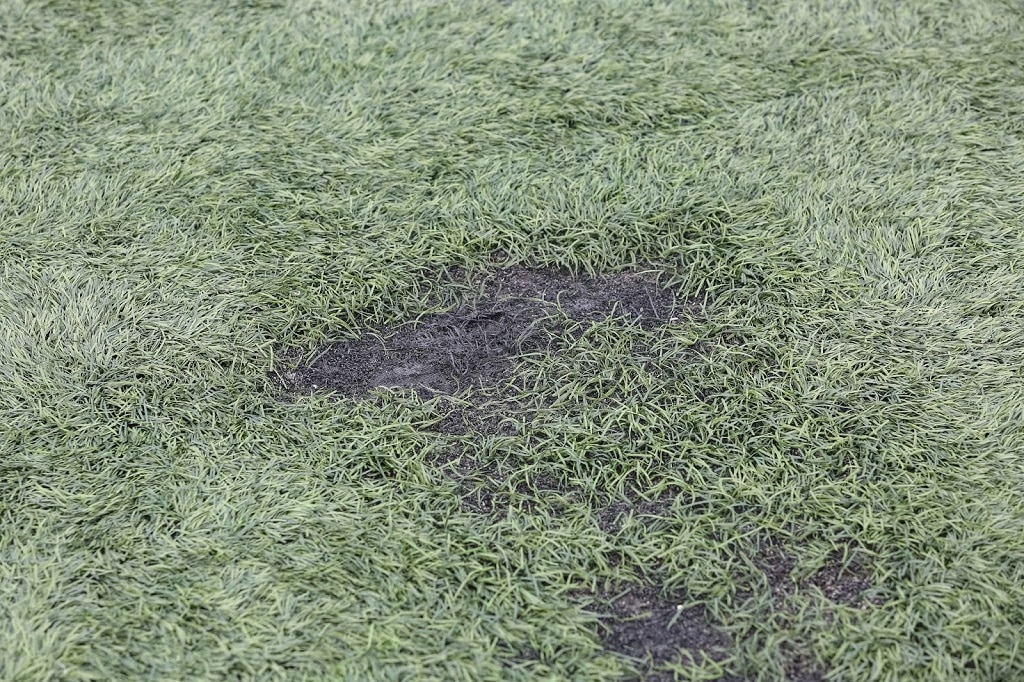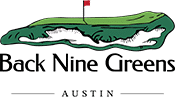What Can Damage Artificial Grass?

Artificial grass is designed to be tough, low-maintenance, and long-lasting—but that doesn’t mean it’s indestructible. Like any outdoor surface, synthetic turf can be damaged if it’s exposed to the wrong conditions or treated improperly.
At LawnPop®, we install artificial grass across Texas for homeowners, pet owners, businesses, and sports facilities. One of the most common questions we hear after installation is, “What should I avoid so my turf lasts as long as possible?”
This guide breaks down what can damage artificial grass, how those issues happen, and what you can do to protect your investment.
Heat Is the #1 Enemy of Artificial Grass
Artificial turf is heat-resistant, but extreme or concentrated heat can cause permanent damage.
Direct Flame or High Heat Sources
Open flames will melt synthetic turf fibers almost instantly. This includes:
- Fire pits placed directly on turf
- Fireworks
- Charcoal grills or smokers
- Torches or welding equipment
Even brief contact can leave burn marks that don’t recover.
Reflective Heat from Windows
One of the most overlooked causes of turf damage is window reflection. Low-emissivity (Low-E) windows can focus sunlight into a narrow beam that raises surface temperatures high enough to melt turf fibers.
This type of damage usually appears as:
- Shiny, flattened patches
- Discolored or curled blades
- Irregular melted shapes
Homes with large windows, sliding doors, or mirrored surfaces are especially vulnerable.
Solution: Use window screens, awnings, or anti-reflective film to reduce focused heat.
Heavy Objects and Furniture Can Flatten Turf
Artificial grass is resilient, but it isn’t immune to compression.
Prolonged Weight Causes Matting
Items like:
- Patio furniture
- Outdoor storage sheds
- Hot tubs
- Playground equipment
can compress turf fibers if left in one spot for too long.
While some flattening is reversible, long-term compression can permanently alter the look of the grass.
Solution: Move heavy objects periodically and brush turf fibers upright using a stiff broom or power brush.
Sharp Objects and Improper Use
Artificial turf is not meant to withstand sharp impacts.
Common Damage Sources
- Dragging metal furniture
- Dropping sharp tools
- Ice picks or spikes
- High-heeled shoes used repeatedly in one area
Sharp objects can cut turf fibers or puncture the backing, leading to separation or seam failure.
Solution: Lift furniture instead of dragging it and avoid using turf as a work surface.
Pet Waste Left Too Long Can Cause Problems
Pet-friendly turf is designed for durability, but neglect can lead to issues.
Urine Build-Up
If pet urine isn’t rinsed regularly:
- Odors can develop
- Bacteria may build up
- Drainage efficiency can decrease
Solid Waste Neglect
Leaving waste for extended periods can stain or contaminate the turf base.
Solution: Rinse pet areas with water weekly and remove solid waste promptly. LawnPop® installs turf systems designed for drainage and odor control, but maintenance still matters.
Improper Cleaning Products
Not all cleaners are safe for artificial grass.
Chemicals to Avoid
- Bleach
- Solvents
- Degreasers
- Petroleum-based cleaners
- Acidic solutions
These products can weaken turf fibers, fade color, or damage the backing.
Solution: Use mild soap and water or turf-specific cleaning products recommended by professionals.
Poor Drainage Beneath the Turf
Most turf problems start below the surface.
What Happens with Bad Drainage
- Standing water
- Base erosion
- Uneven settling
- Mold or mildew underneath
This isn’t a turf product issue—it’s an installation issue.
Solution: Professional installation with proper grading, base material, and drainage planning is critical. LawnPop® designs every turf system to handle Texas rainfall and soil conditions.
Vehicles and Equipment on Turf
Artificial grass is not designed to support vehicle traffic.
Damage from Weight and Tires
- Tire ruts
- Fiber tearing
- Compacted base
- Visible seams
Even small utility vehicles can cause damage over time.
Solution: Keep vehicles off turf areas unless the system was specifically engineered for that purpose.
Snow, Ice, and Improper Winter Tools
While artificial grass handles cold weather well, certain tools can cause damage.
What to Avoid
- Metal shovels
- Ice chippers
- Salt or chemical ice melts
These can slice fibers or degrade turf materials.
Solution: Use plastic shovels and allow ice to melt naturally when possible.
UV Exposure Over Many Years
Quality turf includes UV stabilizers, but low-grade turf can fade.
Signs of UV Damage
- Color fading
- Brittle fibers
- Loss of resilience
This typically happens when cheaper turf products are installed.
Solution: Choose high-quality, UV-protected turf like the products LawnPop® installs across Texas.
Improper Installation Is the Root of Most Turf Failures
The majority of artificial grass damage we see isn’t caused by use—it’s caused by poor installation.
Common mistakes include:
- Thin or uneven base layers
- Inadequate compaction
- Poor seam alignment
- Improper edge restraints
- No drainage planning
Artificial grass is only as good as the system underneath it.
Solution: Work with experienced installers who understand soil, drainage, climate, and turf behavior.
How Long Should Artificial Grass Last?
When installed and maintained properly, high-quality artificial grass can last:
- 15–20 years in residential applications
- Even longer in low-traffic areas
Texas heat makes professional installation even more important.
How LawnPop® Protects Your Turf Investment
At LawnPop®, we don’t just install turf—we engineer outdoor solutions that last.
Our installations focus on:
- Proper base preparation
- Drainage-first design
- Heat-aware placement
- Pet-friendly systems
- Long-term durability
From backyards and playgrounds to sports fields and putting greens, we build turf systems designed for real-world use in Texas conditions.
Ready to Protect Your Artificial Grass the Right Way?
Artificial grass is a smart investment—but only when it’s installed and cared for properly. If you’re planning a new turf project or have questions about maintaining an existing one, LawnPop® is here to help.
We are trusted artificial turf experts serving homeowners, businesses, and facilities across Texas with premium products and professional installation.
Call LawnPop® at (512) 806-0438 today for a free estimate and discover why we’re one of the most trusted artificial grass and synthetic turf providers in Texas.



